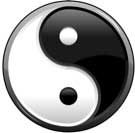Researchers note that acupuncture causes improvements in exercise capacity. In a case history, researchers note “the original combination of acupuncture points, in association with moxibustion, appeared to result in the large improvement in his exercise capacity.” Researchers used 25x30 mm acupuncture needles to stimulate acupoints: St36 (Zusanli), GB34 (Yanglingquan), P6 (Neiguan), Lu1 (Zhongfu), UB17 (Geshu), CV4 (Guanyuan), CV17 (Shangzhong), UB23 (Shenshu) and UB52 (Zhishi). Moxibustion was applied to St36, CV4, UB23 and UB52. Researchers measured an increase in the maximal aerobic capacity (peak oxygen uptake) by 38% and peak ventilation increased by 13%. The researchers concluded that “acupuncture was demonstrated to be an efficient tool for improving the exercise capacity of a healthy, sedentary patient.”
The subject of the investigation was a 30 year old male who received a 1 hour acupuncture treatment, once per day, for ten days consecutively. Tests were performed using standard cardiopulmonary treadmill exercise evaluations. The researchers note that in a prior study published in the Chinese Medicine Journal, acupuncture was shown to decrease both resting heart rate and carbon dioxide production. This case history measured other improvements in exercise capacity that prompted the researchers to call for a follow-up investigation into determining the optimal acupuncture points for athletic enhancement.

Reference:
Acupuncture and exercise capacity: A case report. Reginaldo Ceolin do Nascimento, Carlos Alberto Cordeiro Hossri, Otavio Berwanger, and Vitor Oliveira Carvalho. Clinics (Sao Paulo). 2012 February; 67(2): 193–194. doi: 10.6061/clinics/2012(02)18.
Lin JG, Ho SJ, Lin JC. Effect of acupuncture on cardiopulmonary function. Chin Med J 1996;109:482–5.

